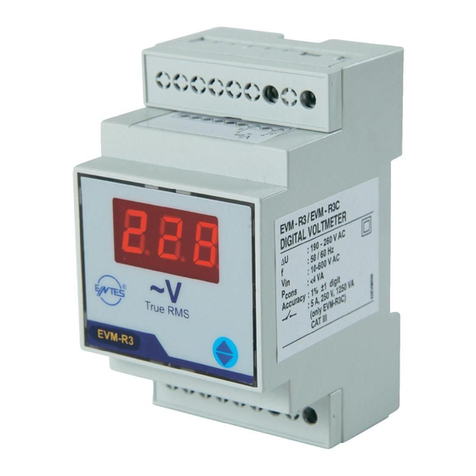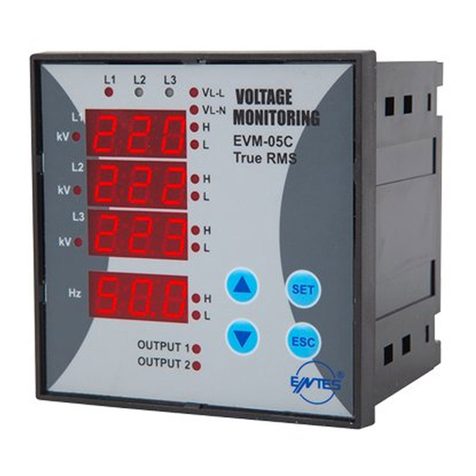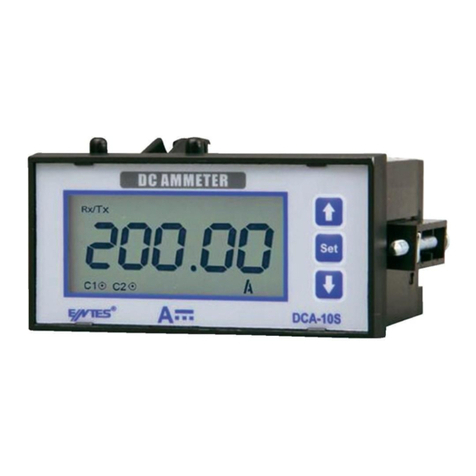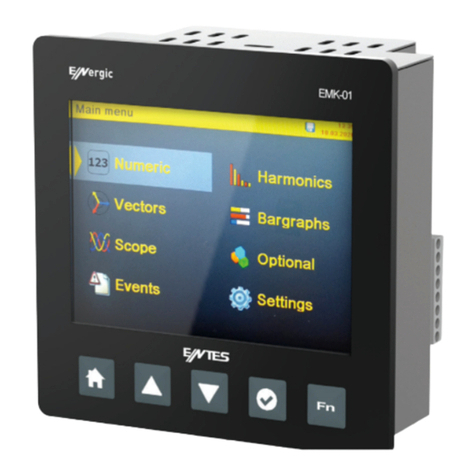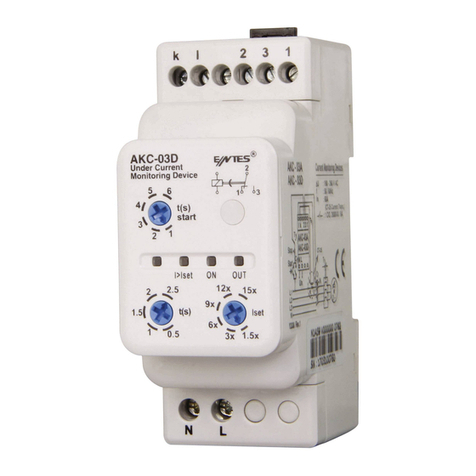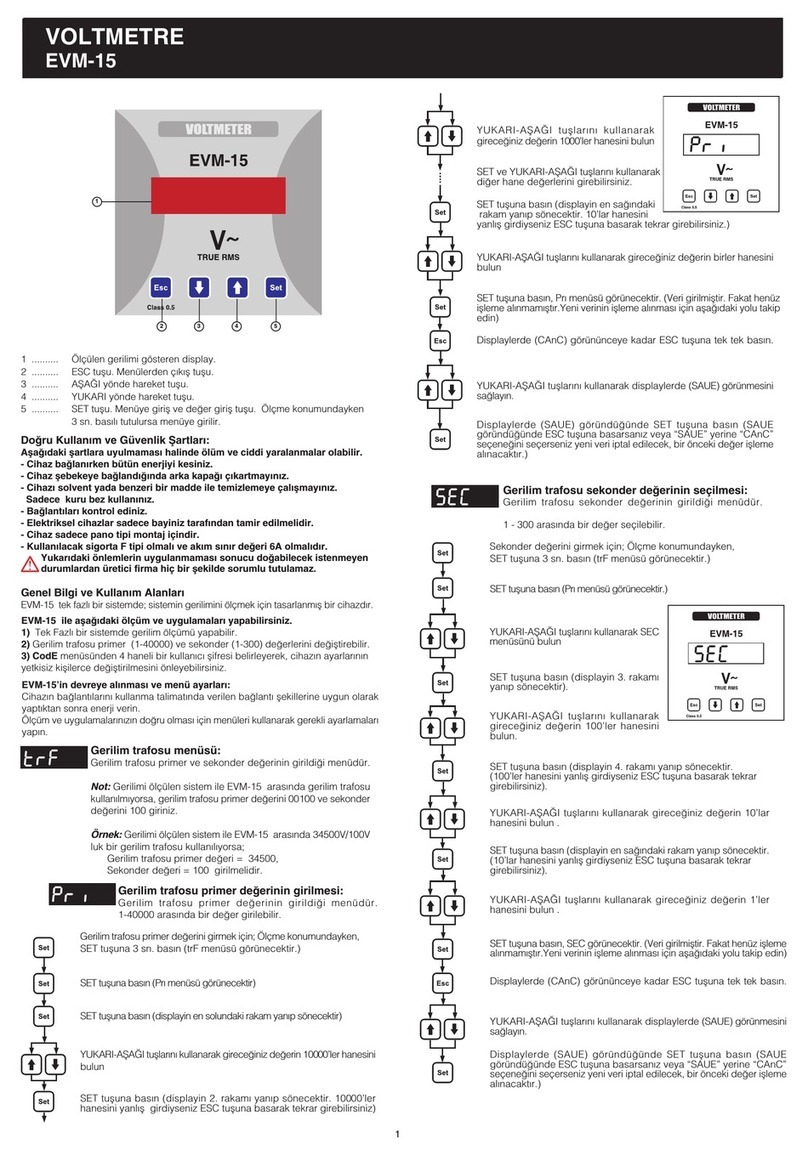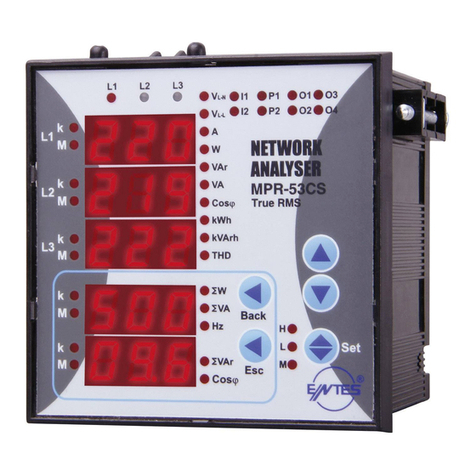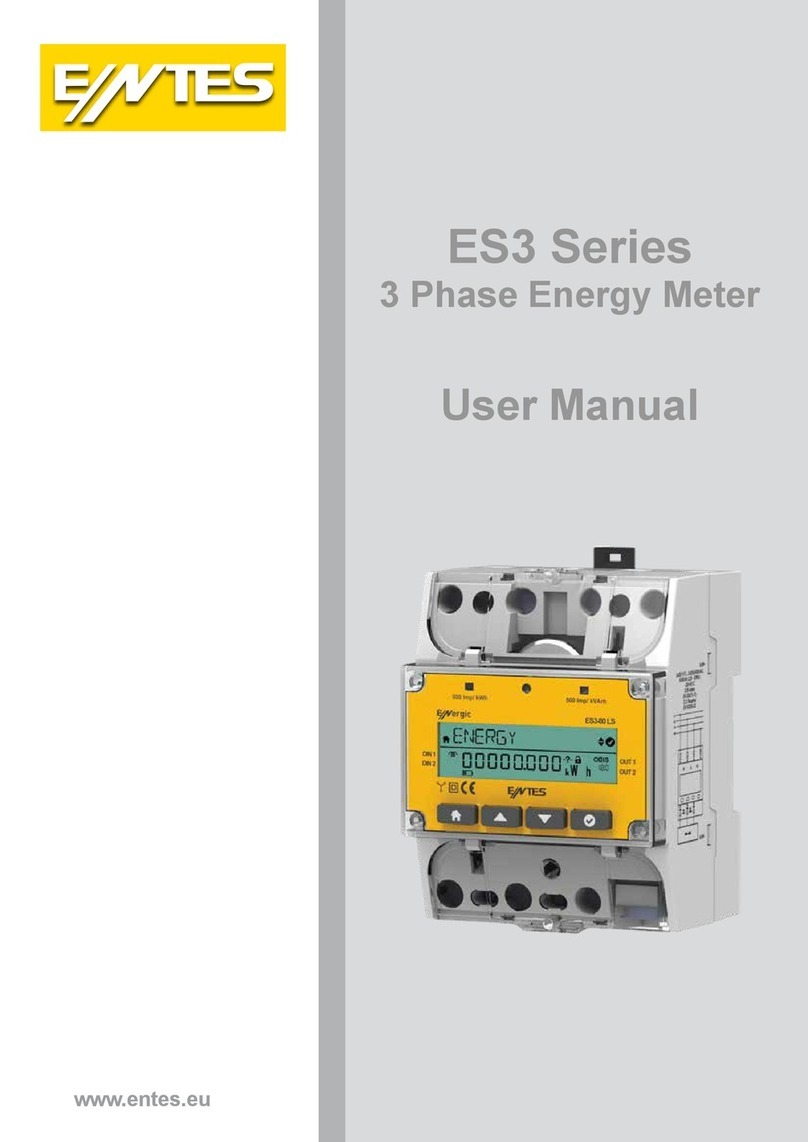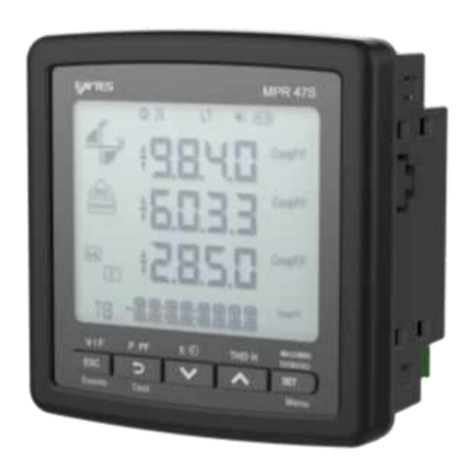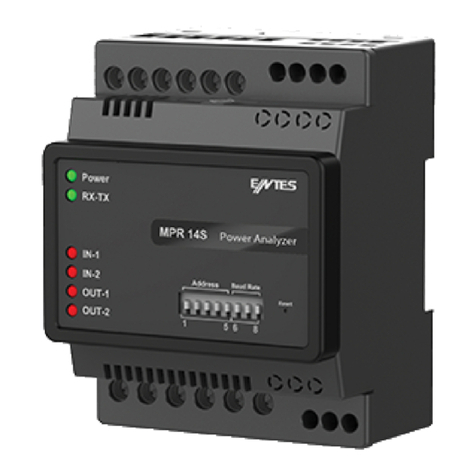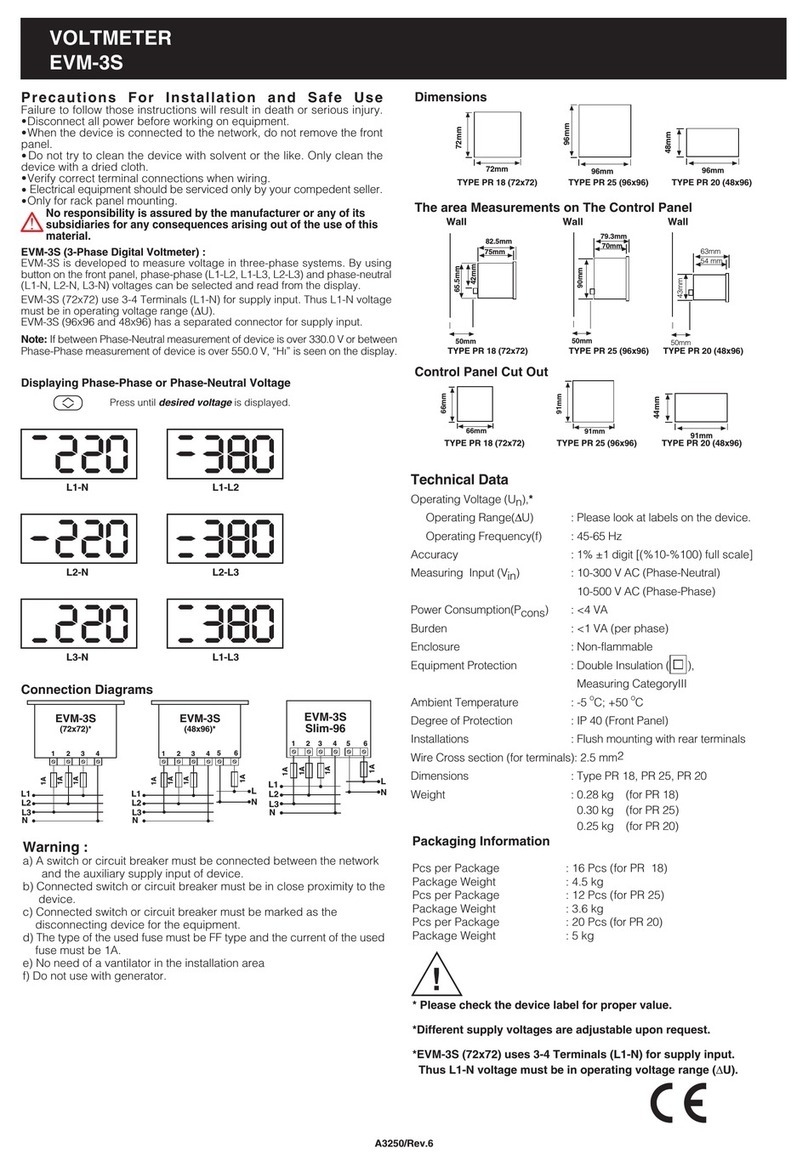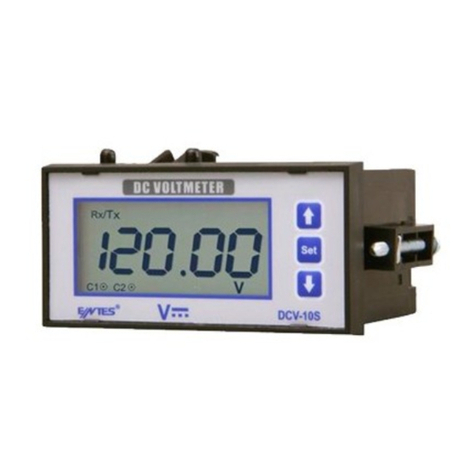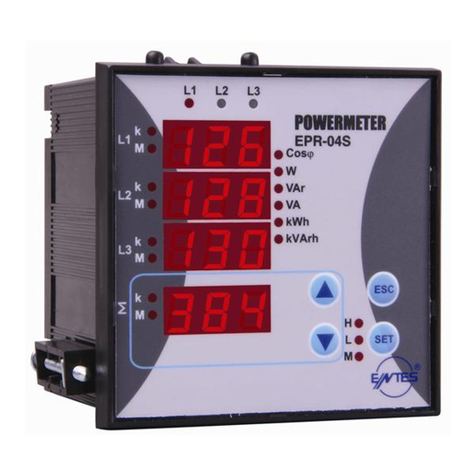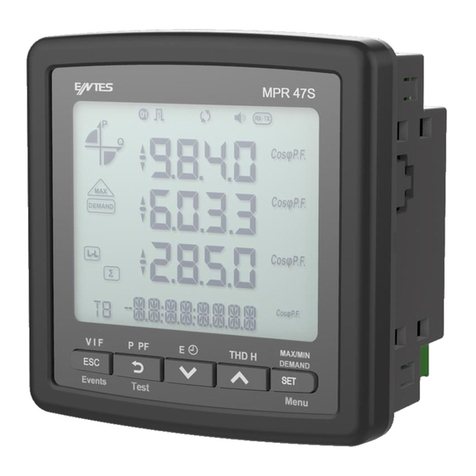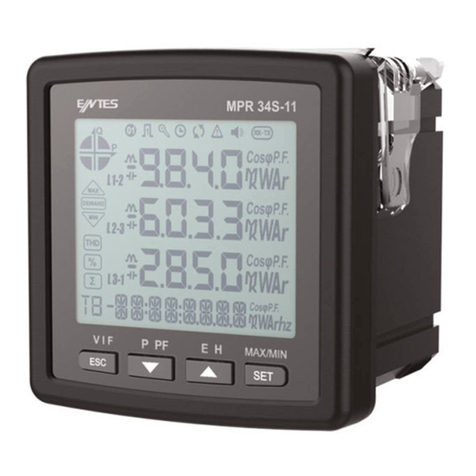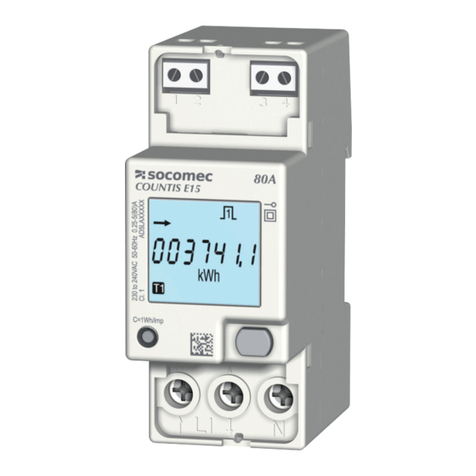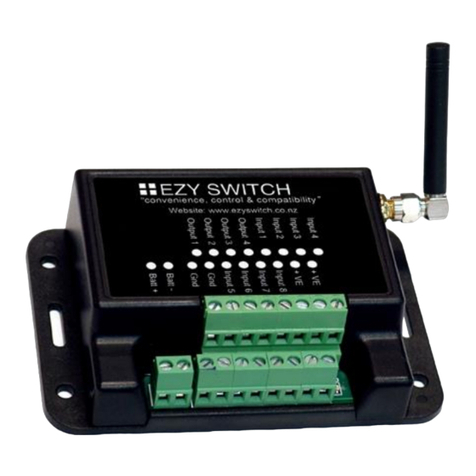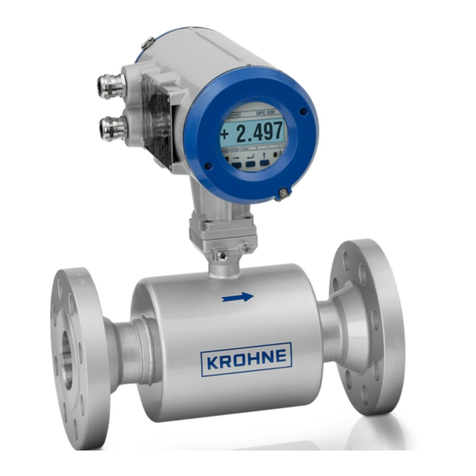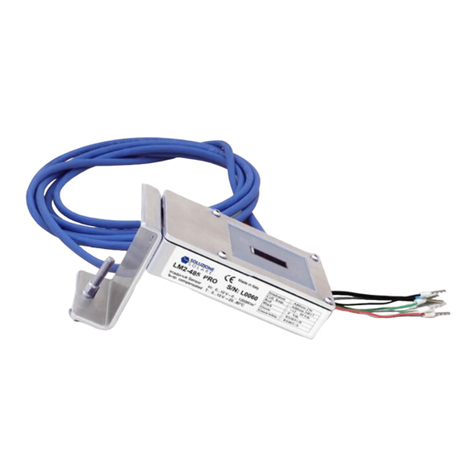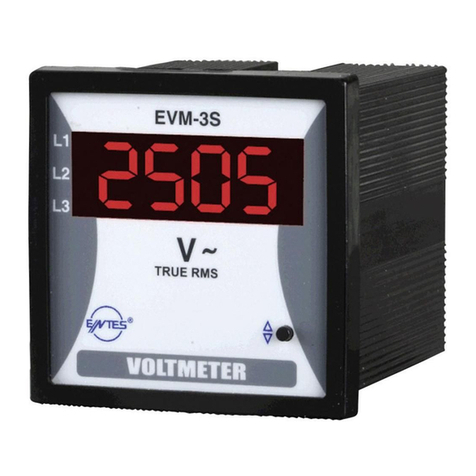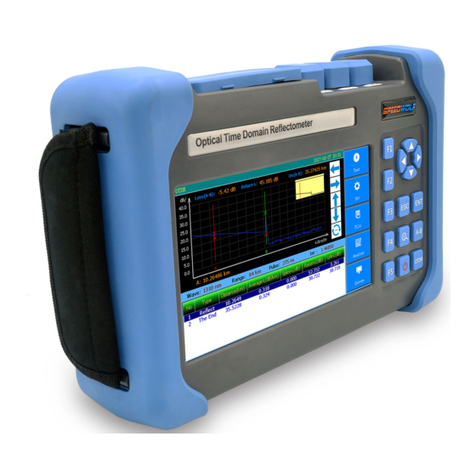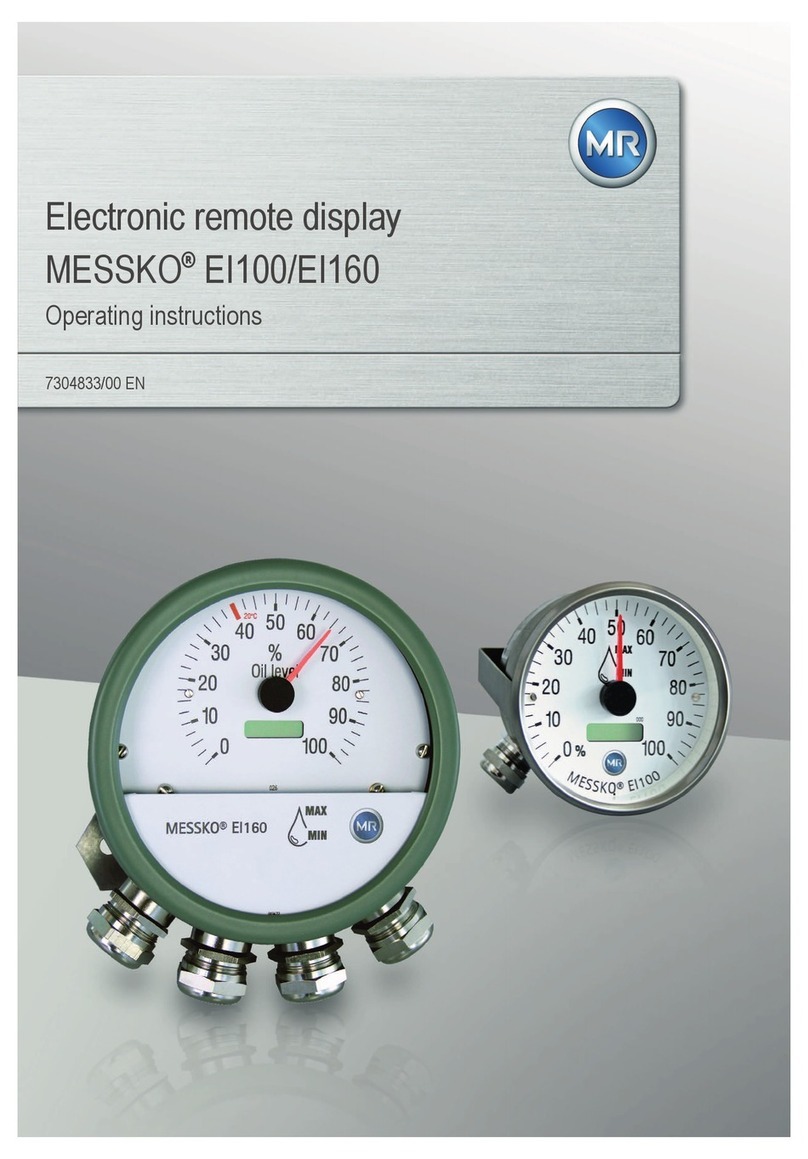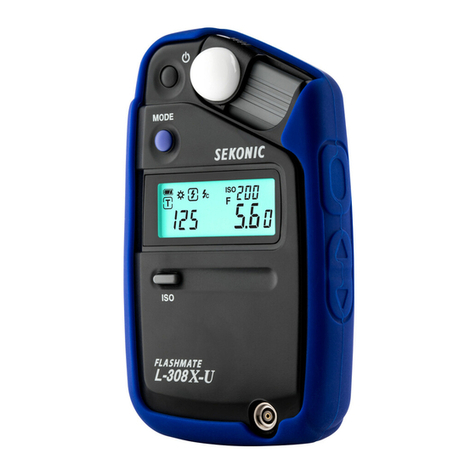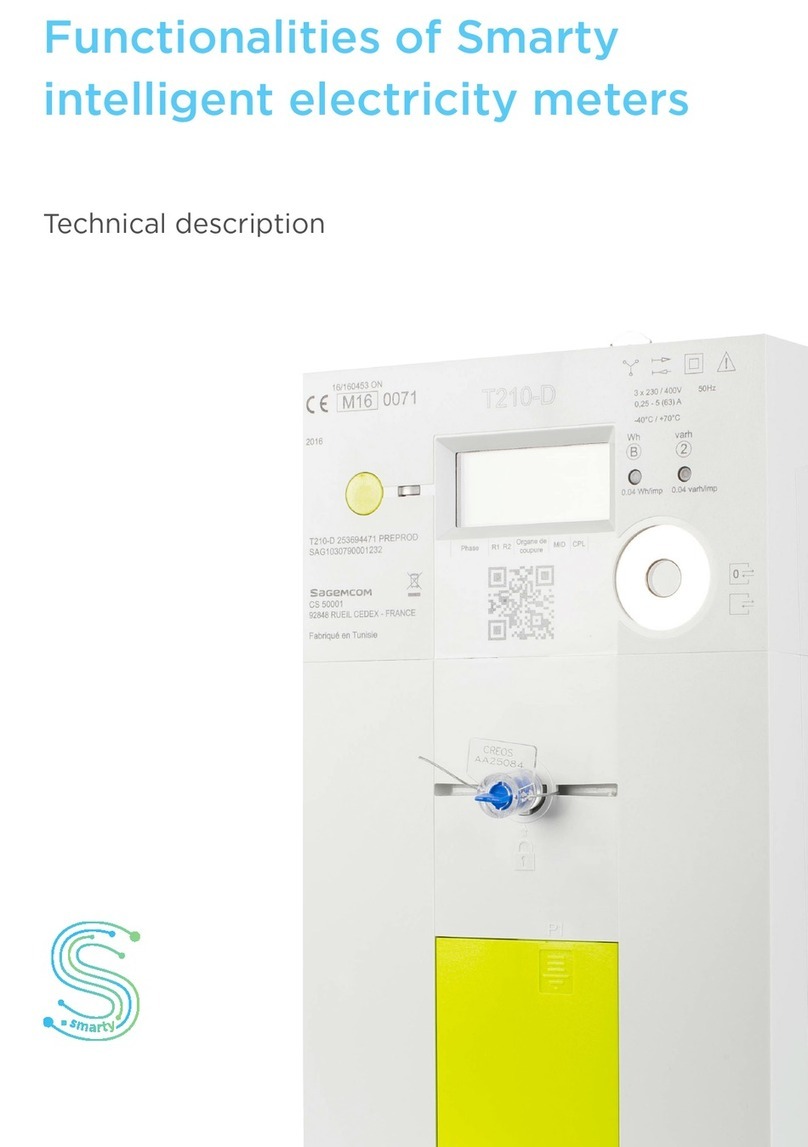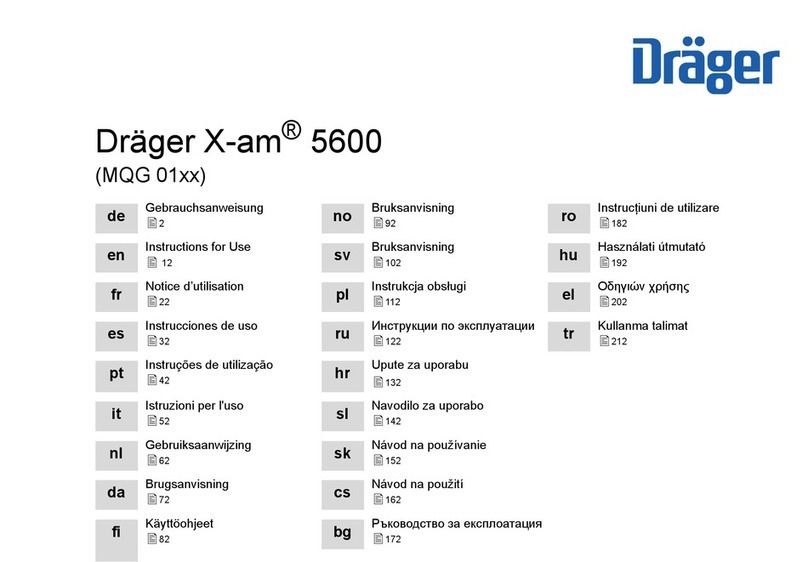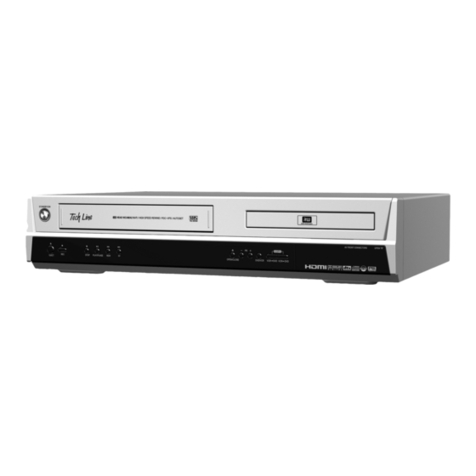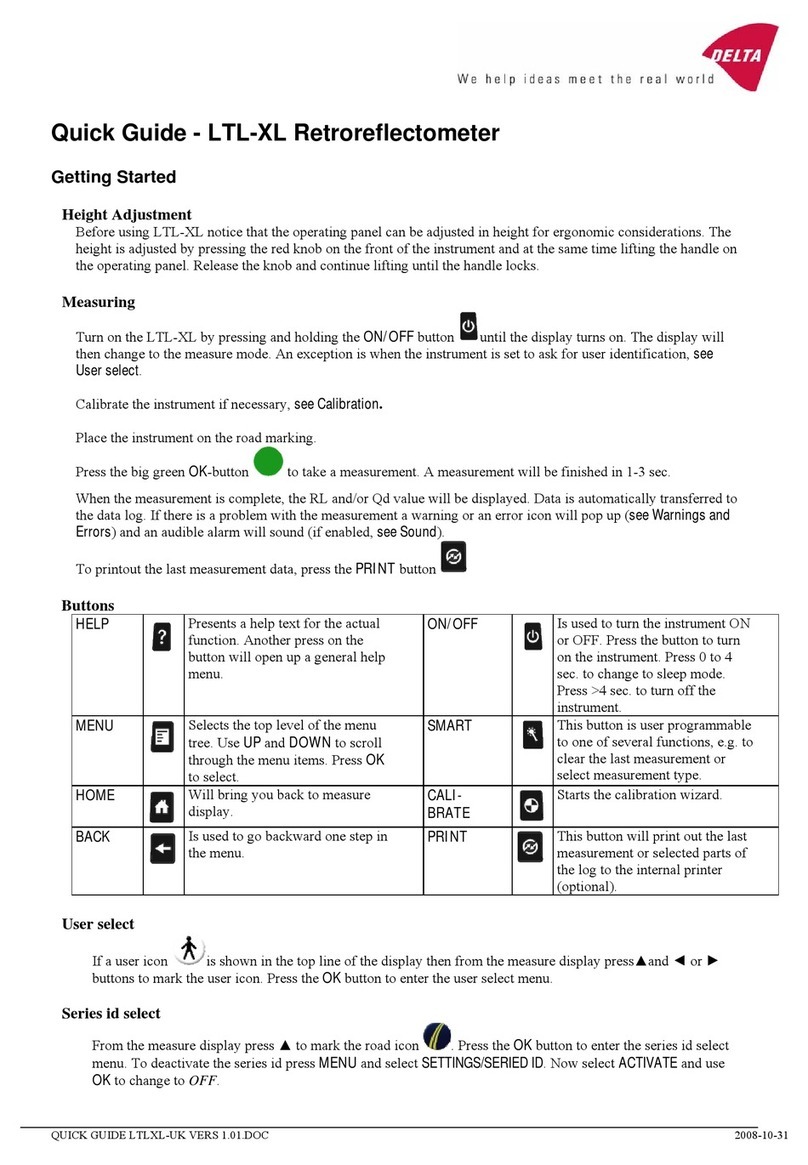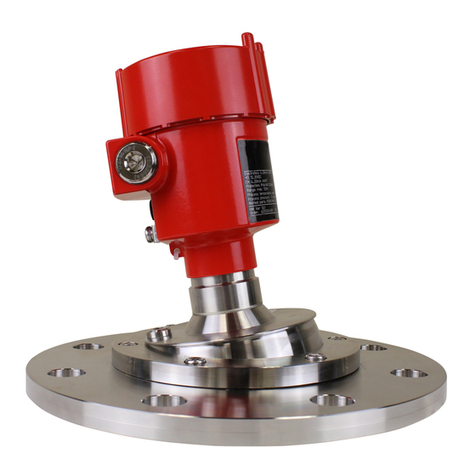7 –Indicates that the RTC is reset and stays on until RTC is adjusted.
8 –Indicates that there is a phase sequence error.
9 –Indicates that there is a warning
10 –Indicates that the alarm output is active.
11 –Indicates that the communication is active.
12 –Indicates whether the value is CosØor Power Factor.
13 –Indicates the unit of the value (W, kVAr, MVA, etc.).
14 –Indicates the measured values of the correspondingscreen.
15 –Indicates the unit of the energy or the correspondingsetting.
16 –Indicates energy value or time.
17 –Indicates for which tariff the energy measurement is.
18 –Indicates that the energy value is negative.
19 –Indicates the total screen. (I.e. Total powers).
20 –Indicates the percent values. (I.e. Harmonics)
21 –Indicates that the displayed values are for Total Harmonic Distortion.
22 –Indicates L1, L2, L3 and L1-2, L2-3 and L3-1 measurements.
23 –Indicates that the corresponding screen is one of Minimum, Maximum, Demand or Maximum
Demand screens.
Button Functions
In addition to their main functions, the 4 buttons on the front panel can be used as shortcut buttons for
easilyreaching screens.
BACK button (24): It has 3 main functions:
Exiting from any menu is done by pressing BACK
button.
While on measuring screen: As seen on the symbols (V I F) above the button, it is used to
browse between voltage, current and frequency measurement screens.
While on measuring screen: As seen on the symbols (Event) below the button, event screen is
reached when pressed for 3 seconds.
DOWN Button (26) : It has 3 main functions:
While on measuring screen: As seen on the symbols (P PF) above the button, it is used to
browse between active power, reactive power, apparent power, power factor and Cos φ
measurement screens.
It is used to select the previous digit while entering a numerical value in the menu or to browse
back to a previous menu level.
While on measuring screen: As seen on the symbols (Test) below the button, connection control
is reached when pressed for 3 seconds.
UP Button (25) : It has 2 main functions:
While on measuring screen: As seen on the symbols (E H) above the button, it is used to browse
between energy and harmonics screens.
While on menu screens: It is used to browse between menu options and to decrease a value
during adjustment.
SET Button (27) : It has 3 main functions:
It provides access to menu screens when pressed for 3 seconds. When the PIN is active, a
password is asked before entering the menu. After the correct password is entered, access to
menu is allowed.
It is used to reach the desired adjustment screen and to save the changed settings. Pressing the
button is enough for this operation.
While on measuring screen: It is used to browse between Min, Max, Demand and Max Demand
screens.




















